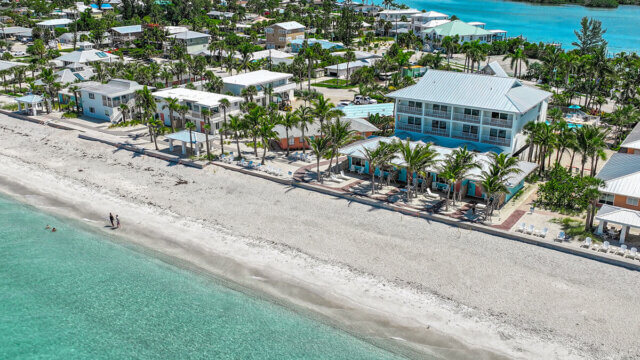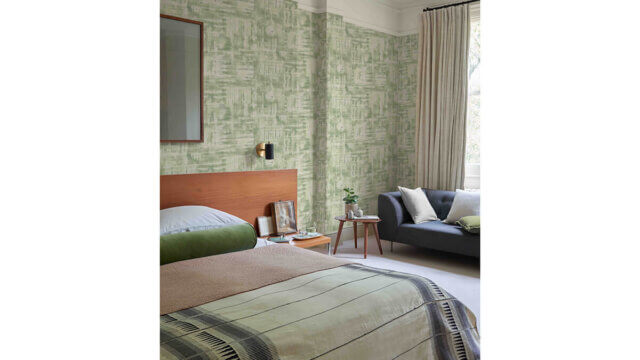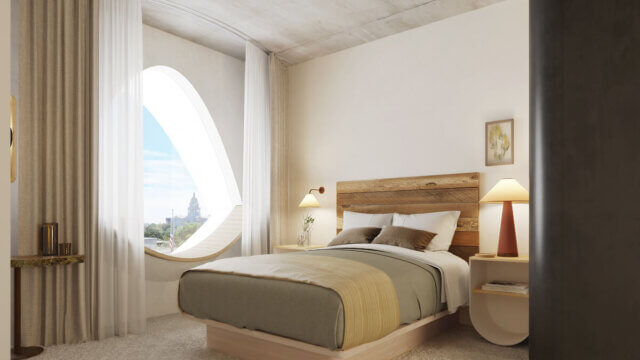Mr. C Miami—Coconut Grove is a premier luxury boutique hotel conceived by Ignazio and Maggio Cipriani, a fourth-generation hotelier family. Giuseppe Cipriani opened Harry’s Bar off of a tiny street off Venice’s Piazza San Marco in 1931. Today, almost 90 years later, brothers Ignazio and Maggio Cipriani have drawn on their rich family history to create the luxury hospitality and residential brand known as Mr. C. Cipriani is internationally renowned for its restaurants, hotels and residences with locations in metropolitan destinations including Beverly Hills and Manhattan, and now Miami.

The award-winning architecture firm, Arquitectonica, conceived the exterior design modeled after the pier-like Stiltsville structures located off the Florida Cape. The property has silver-level LEED certification for environmental sustainability as well as green energy-efficient lighting.
“Often, there is more than one idea that is the origin of a concept,” said Bernardo Fort-Brescia, founding principal, Arquitectonica. “The project overlooks Sailboat Bay (also known as Schooner Bay in the days of Miami’s beginnings) the largest marina in the South. It is home to several sailing clubs and the U.S. Olympic Sailing Center. So, naval architecture is a large part of the inspiration. In addition, the Cipriani family hails from Venice, the city where one travels by boat. And we both have a love for those beautiful Riva Yachts of the post-war era. Then insert Coconut Grove, famous for its lush tropical setting, for its enormous Banyan trees engulfing the main highway. Add the amazing Stiltsville in front of it, the village lifted over the water on of course stilts. We lifted the nautical-inspired building on stilts to float over the sea of tree canopies in search of the view of Schooner Bay and Stiltsville on the horizon.”
AD100 interior designer, Martin Brudnizki, architect/product designer/founder, Martin Brudnizki Design Studio, designed the 100-room, six-story boutique property overlooking Biscayne Bay. The nautical look of the resort, as shown by its azure and white-colored terrazzo floors and glossy wood paneling, is influenced both by coastal Italian culture, and the sleek interior of a yacht or cruise ship.
“Venice is the source of inspiration for the project. Being the location of the first Cipriani and a city renowned for art and culture, it always inspires me. For this project, we particularly looked at mid-century Venice and the fusion seen in the blending of traditional craft and modernist shapes, such as the Riva Boat. This hotel is very much influenced by classical yacht design in its use of materiality and the shapes of the furniture. It is very nautical,” Brudnizki said.

The property also features a rooftop pool and private cabanas; two signature Italian dining establishments including the signature Bellini rooftop restaurant and Il Giardino creperie and outdoor terrace cafe.
“The food and beverage offering is key to any hotel but even more so with Mr. C. Being based in Coconut Grove, we knew we had to appeal to the local market and become a destination loved by the community around the hotel. Community is so important to residents of the area and so we wanted to welcome and appeal to everyone in the vicinity. Not just attract guests from Miami Beach or internationally. I think what helps is the terrace and views. There aren’t many destinations where you can dine and look out across the Ocean. It’s a really beautiful space to sit and it feels like you are sailing on a yacht across the seas,” Fort-Brescia said.
In addition, there’s a fitness center featuring Technogym equipment, personal trainers and yoga classes; a wellness center and spa complete with BēAtala products, a private sauna and treatment room; and a ballroom for weddings or private events.
“We wanted to capture the timeless charm of Italy’s iconic coastal style, with high gloss timber paneling, chrome or lacquer detailing and comfortable curves in the furniture,” Brudnizki said. “We’ve then added a layer of mid-century Italy, as Murano glass chandeliers hang above large-scale terrazzo floors. The combination of the shapes and materiality of the mid-century yacht-style works perfectly with Miami, a city famous for its oceanfront and also one famous for its own modernist architectural style. They seem to fuse perfectly and so the hotel feels like it’s always been there.”





